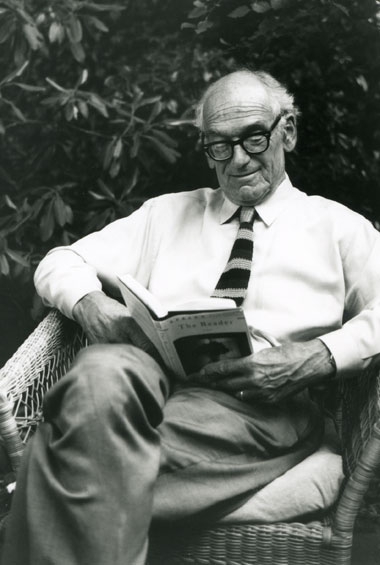Lunedì 12 ottobre 2009, alle ore 15.00, in Aula Carlo De Carli (via Durando, 10 – Campus Bovisa, Facoltà di Architettura Civile, Politecnico di Milano), verrà assegnata la laurea ad honorem in Architettura a James Sloss Ackerman.
Pronuncerà la laudatio il professor Luciano Patetta.
Pronuncerà la laudatio il professor Luciano Patetta.
Pronuncerà la laudatio il professor Luciano Patetta.
Michelangelo’s “Theory” of Architecture
Michelangelo’s “Theory” of Architecture
Michelangelo’s “Theory” of Architecture
«Michelangelo, one of the greatest creative geniuses in the history of architecture, frequently claimed that he was not an architect. The claim is more than a sculptor’s expression of modesty: it is a key to the understanding of his buildings, which are conceived as if the masses of a structure were organic forms capable of being moulded and carved, of expressing movement, of forming symphonies of light, shadow and texture, like a statue. The only surviving evidence of Michelangelo’s theory of architecture is the fragment of a letter of unknown date and destination in which this identity of architecture with painting and sculpture is expressed in a manner unique in the Renaissance:
x
“Reverend Sir (Cardinal Rodolfo Pio?): When a plan has diverse parts, all those (parts) that are of one kind of quality and quantity must be adorned in the same way, and in the same style, and likewise the portions that correspond [e. g. portions in which a feature of the plan is mirrored, as in the four equal arms of St Peter’s]. But where the plan is entirely changed in form, it is not only permissible but necessary in consequence entirely to change the adornments and likewise their corresponding portions; the means are unrestricted (and may be chosen) at will [or: as the adornments require]; similarly the nose, which is in centre of the face, has no commitment either to one or the other eye, but one hand is really obliged to be like the other and one eye like the other in relation to the sides (of the body), and to its correspondences. And surely, the architectural members derive from human members. Whoever has not been or is not a good master of the figure and most of all, of anatomy, cannot understand anything of it”.
x
It is not unusual for Renaissance theorists to relate architectural forms to those of the human body; in one way or another this association, which may be traced back to ancient Greece and is echoed in Vitruvius, appears in all theories of the age of Humanism. What is unique in Michelangelo is the conception of the simile as a relationship which might be called organic, in distinction to the abstact one proposed by other Renaissance architects and writers. It is anatomy, rather than number and geometry, that becomes the basic discipline for the architect; the parts of a building are compared, not to the ideal overall proportions of the human body but, significantly, to its functions. The reference to eyes, nose and arms even suggests an implication of mobility; the building lives and breathes».
da James S. Ackerman, The Architecture of Michelangelo (1961)
da James S. Ackerman, The Architecture of Michelangelo (1961)
